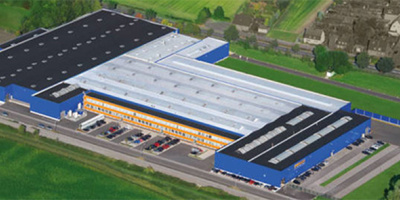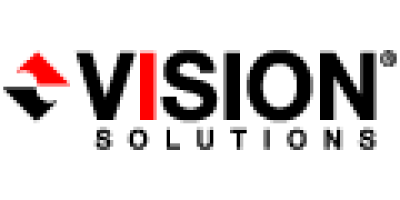Some of the most important business success factors are obvious and common to all commercial enterprises across all industries: boost productivity, maximize returns on assets, improve customer satisfaction. The question is how to go about it. CBK, a leading wholesaler of home décor accents and gift items, knew that modern technologies could offer considerable assistance in achieving these goals within its sales processes, but the company wanted to find the most cost-effective way to implement the necessary changes while still gaining all of the benefits promised by the technologies. After careful consideration, CBK determined that ASNA Visual RPG (AVR) for .NET, from ASNA Inc., could provide a large part of the answer.
Union City, Tennessee-based CBK is one of the country's leading wholesalers of competitively priced, quality home décor products and accessories. The company offers wholesalers and retailers the largest selection of product styles, from the most elegant designs to the latest trends, including a variety of items such as wall art, textiles, picture frames, tabletop items, candleholders, accent furniture, lamps, holiday items, garden décor, and much more.
CBK's Metal Arts, Frame Traditions, Company 2000, Pinnacle Lamps, Seasons Unlimited, Textures, Trendsetter, and Wicker Gallery divisions sell the CBK brand through more than 25,000 independent retailers across the United States. CBK-branded products consistently rank at the top of their competitive categories in point-of-sale surveys conducted by giftware industry publications. The company has a total of 240 employees at its Union City and Franklin, Tennessee, offices and a national sales staff of more than 200. CBK is a wholly owned subsidiary of Greenwich, Connecticut-based Blyth, Inc., a leading designer and marketer of home décor and home fragrance products.
The Need: Automate Sales Processes
Until a few years ago, much of CBK's sales process was manual and paper-based. In the past, when CBK sales representatives, who typically work out of their homes, visited a customer, they carried two thick product catalogs. Orders were written by hand on standard forms. The sales rep left one copy of the completed order sheet for the customer. Another copy was faxed or, worse, mailed to CBK's head office at the end of the day when the sales rep returned to his or her home office. The next day, clerks at the head office manually keyed new orders into CBK's iSeries system.
In addition to being extremely labor intensive and prone to human error, this manual process meant that headquarters was not aware of orders and could not begin filling them until a day after they were placed or, in the case of mailed-in orders, even longer.
The use of paper-based catalogs added to the company's costs. CBK regularly introduces new products, discontinues old products, and changes prices. In the past, the company sent its sales force weekly packages containing catalog updates and product and sales reports. The sales reps then replaced the outdated catalog sheets. This administrative work typically took each sales rep 30 to 60 minutes every week. Even at the low end of this estimate, just 30 minutes per week, that represented a cost of 100 hours per week, or 5,200 hours per year, across a 200-person sales force. In addition to this large labor cost, printing and shipping charges incurred to distribute the updates further reduced the company's profitability.
Beyond these hard costs, there could also be an issue of the timeliness of the sales reps' copies of the catalogs. They would be out-of-date at least by the length of time that it took for the updates to arrive in the mail--and possibly considerably longer if a sales rep inadvertently neglected to insert an update.
Realizing that networking and automation could reduce these costs, CBK launched a project in 2002 to automate the sales process in its showrooms. With the new system in place, sales reps in the showroom entered orders directly into the company's systems using wireless, handheld devices. In 2003, based on the success of the showroom automation project, the company decided to give its field sales reps similar tools.
Choosing an Architecture
The architecture of the new application's front-end was chosen early in the process. Many of the sales reps were quite familiar with PCs. However, because a few of them had very limited keyboarding skills, CBK selected Windows-based convertible notebooks that could operate either as standard notebook PCs or as tablet PCs that provide the option of stylus-based data entry.
Since the main strength of CBK's IT staff was in the iSeries arena, the company's in-house Windows expertise was insufficient to create the new front-end application within the project's target schedule. Consequently, the company outsourced that portion of the development effort to a trusted vendor.
Next, CBK had to decide on the back-end iSeries software and how to connect it to the front-end PCs. One aspect of the back-end architecture was certain right from the start: It would continue to run on iSeries. "We love our iSeries and saw no reason to replace it, so our sales force automation solution had to provide interoperability with that computer now and in the future," proclaimed Mark Bondurant, vice president of information technology for CBK.
At first, CBK considered buying packaged software to do the job, but after evaluating the alternatives, the company realized that adopting an off-the-shelf solution would force it to accept too many compromises and require that it bend the company's business processes to accommodate the vagaries of the software. Either that or CBK's developers would have had to spend so long tailoring the software that the advantage of buying a packaged application would be lost.
With the decision against packaged software made, the next question was how to develop the necessary functionality in-house at the lowest possible cost while delivering the greatest possible value. After some evaluation, CBK narrowed the choice of a development platform down to IBM's WebSphere approach written in Java or Microsoft's .NET architecture.
Leveraging Existing Skills
One important factor in the decision was the realization that, if the company adopted a radically new application development platform, it would have to incur significant training and/or hiring costs, not to mention a long project delay, to acquire the necessary skills. Furthermore, shifting to an entirely new development platform would result in the underutilization of the company's existing RPG skill set.
It was this desire to leverage the company's investment in existing skills that led CBK to discount the use of Java and WebSphere. Adopting Java would have required that CBK either hire new programmers who were not familiar with CBK's business or spend a lot of time and money training its current developers in Java. "Going down the Java/WebSphere route just wasn't going to happen very fast or very easily," said Bondurant. "I needed my people, who knew CBK's business, working on this. I needed to retool them and make them productive very, very fast."
Bondurant decided to go with the .NET option, but he needed a tool that would allow his RPG developers to write code in this new environment quickly by utilizing their existing, hard-earned RPG skills. AVR for .NET provided the solution that Bondurant was looking for.
AVR is a programming language that is very familiar to RPG programmers, but it allows them to create applications that are 100% compliant with Microsoft Intermediate Language, the language underlying all Microsoft .NET applications. Because AVR creates .NET code using a version of RPG syntax that is very similar to iSeries RPG, iSeries programmers can use AVR to create modern applications using techniques that are already familiar to them. Because they are not forced to learn the new programming techniques required by Java, C#, or Visual Studio, RPG programmers can quickly become productive in the .NET environment.
"It [AVR] was a clear choice for me because I could easily convert my existing iSeries RPG-proficient staff over to.NET. AVR for .NET is not the RPG that runs on the iSeries," Bondurant said, "but it's not so far away, either."
On Time, On Budget
Deadlines for the new sales force automation system were tight and, because it was a very high-profile application, schedule slippage was not an option. "This was not a project in which we could ask for more time," declared Bondurant. "CBK management and the sales force were counting on it."
With the help of AVR, CBK brought the project in on time and within budget. In May of 2004, just six months after initiating coding, beta testing was complete and the new system was delivered to the sales force. Of those six months, only four were required for coding. The other two months consisted of extensive testing and some refinement of the system.
Bondurant cites three reasons for his team's success:
- The company expended considerable effort up front to evaluate the options and develop a plan that would meet the project's objectives as expeditiously as possible.
- CBK adopted the right technology for the job.
- CBK ensured that it had the right people involved in development.
One important consideration when selecting an information technology vendor is the support that it provides. ASNA has proven to be a good choice in this regard. "I've been very pleased with their support," said Bondurant. "With ASNA, they're quick on the draw. If the person who you're talking to cannot help you with a specific issue, they'll rapidly move you to somebody who can."
Adding Up the Benefits
The benefits of the new sales force automation application developed with the help of AVR have been numerous:
- CBK achieved material increase in average order size. This benefit was not anticipated before the project was undertaken. CBK attributes the increase to the greater product information that is now at sales reps' fingertips. For example, the sales rep can use information on past purchases to work with customers to ensure that they place timely orders for any items that they buy regularly but which may be in short supply.
- CBK has been able to deploy the most modern technologies available while still leveraging existing RPG skills. This has the added benefit of allowing developers to work with the latest technologies without having to write off the investment they have made in building their existing skills.
- By eliminating manual order-entry processes, errors were reduced and orders can now be filled faster, thereby speeding up cash flows and improving customer satisfaction.
- Making product information accessible to salespeople online has dramatically reduced printing and administrative costs.
- CBK has been able to transfer some order-entry administrative staff into the Tech Sales Support department, thus providing more help for the sales staff and a better sales experience for the customer.
- The new sales force automation system has won high praise from its users, CBK's sales force, thereby increasing their job satisfaction and their productivity.
CBK does not disclose the magnitude of the increase in order size that it has been able to achieve with the new system, but despite the fact that the project was justified based solely on cost-savings (savings that materialized as expected), the company has calculated that just the increase in order size alone provided an acceptable payback.
Continuing Value
The benefit of AVR did not end with the initial project development. CBK's IT department is committed to listening to and addressing the needs of the company. Discussions with the salespeople uncovered areas where new features and enhancements could contribute additional value.
Building on this feedback, in just the one year since the initial launch of the sales automation system, CBK's IT department has released three major updates to the system, one of which included more than 20 enhancements. AVR helped to reduce the development time and the cost associated with getting these updates out to the sales force, where they could begin to accrue value.
"AVR has helped in that our enhancements don't take long to put in place," exclaimed Bondurant. "We don't have dedicated programmers working strictly on AVR or the sales force automation code. We put them on it only when necessary. [Before we start a new enhancement project] we'll come up with a list of things that we'd like to accomplish and time estimates, and I'm amazed at how quickly they can do all of the tasks. It's very fast."
Joel Klebanoff is a consultant, a writer, and president of Klebanoff Associates, Inc., a Toronto, Canada-based marketing communications firm. Joel has 25 years experience working in IT, first as a programmer/analyst and then as a marketer. He holds a Bachelor of Science in computer science and an MBA, both from the University of Toronto. Contact Joel at

ASNA Inc.
9901 West IH-10, Suite 1000
San Antonio, Texas 78230
USA
Web: www.asna.com
Email:
Tel: 800.289.ASNA (2762) or 210.408.0212
Fax: 210.408.0211
























 More than ever, there is a demand for IT to deliver innovation. Your IBM i has been an essential part of your business operations for years. However, your organization may struggle to maintain the current system and implement new projects. The thousands of customers we've worked with and surveyed state that expectations regarding the digital footprint and vision of the company are not aligned with the current IT environment.
More than ever, there is a demand for IT to deliver innovation. Your IBM i has been an essential part of your business operations for years. However, your organization may struggle to maintain the current system and implement new projects. The thousands of customers we've worked with and surveyed state that expectations regarding the digital footprint and vision of the company are not aligned with the current IT environment. TRY the one package that solves all your document design and printing challenges on all your platforms. Produce bar code labels, electronic forms, ad hoc reports, and RFID tags – without programming! MarkMagic is the only document design and print solution that combines report writing, WYSIWYG label and forms design, and conditional printing in one integrated product. Make sure your data survives when catastrophe hits. Request your trial now! Request Now.
TRY the one package that solves all your document design and printing challenges on all your platforms. Produce bar code labels, electronic forms, ad hoc reports, and RFID tags – without programming! MarkMagic is the only document design and print solution that combines report writing, WYSIWYG label and forms design, and conditional printing in one integrated product. Make sure your data survives when catastrophe hits. Request your trial now! Request Now. Forms of ransomware has been around for over 30 years, and with more and more organizations suffering attacks each year, it continues to endure. What has made ransomware such a durable threat and what is the best way to combat it? In order to prevent ransomware, organizations must first understand how it works.
Forms of ransomware has been around for over 30 years, and with more and more organizations suffering attacks each year, it continues to endure. What has made ransomware such a durable threat and what is the best way to combat it? In order to prevent ransomware, organizations must first understand how it works. Disaster protection is vital to every business. Yet, it often consists of patched together procedures that are prone to error. From automatic backups to data encryption to media management, Robot automates the routine (yet often complex) tasks of iSeries backup and recovery, saving you time and money and making the process safer and more reliable. Automate your backups with the Robot Backup and Recovery Solution. Key features include:
Disaster protection is vital to every business. Yet, it often consists of patched together procedures that are prone to error. From automatic backups to data encryption to media management, Robot automates the routine (yet often complex) tasks of iSeries backup and recovery, saving you time and money and making the process safer and more reliable. Automate your backups with the Robot Backup and Recovery Solution. Key features include: Business users want new applications now. Market and regulatory pressures require faster application updates and delivery into production. Your IBM i developers may be approaching retirement, and you see no sure way to fill their positions with experienced developers. In addition, you may be caught between maintaining your existing applications and the uncertainty of moving to something new.
Business users want new applications now. Market and regulatory pressures require faster application updates and delivery into production. Your IBM i developers may be approaching retirement, and you see no sure way to fill their positions with experienced developers. In addition, you may be caught between maintaining your existing applications and the uncertainty of moving to something new. IT managers hoping to find new IBM i talent are discovering that the pool of experienced RPG programmers and operators or administrators with intimate knowledge of the operating system and the applications that run on it is small. This begs the question: How will you manage the platform that supports such a big part of your business? This guide offers strategies and software suggestions to help you plan IT staffing and resources and smooth the transition after your AS/400 talent retires. Read on to learn:
IT managers hoping to find new IBM i talent are discovering that the pool of experienced RPG programmers and operators or administrators with intimate knowledge of the operating system and the applications that run on it is small. This begs the question: How will you manage the platform that supports such a big part of your business? This guide offers strategies and software suggestions to help you plan IT staffing and resources and smooth the transition after your AS/400 talent retires. Read on to learn:
LATEST COMMENTS
MC Press Online